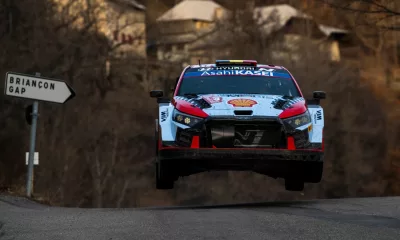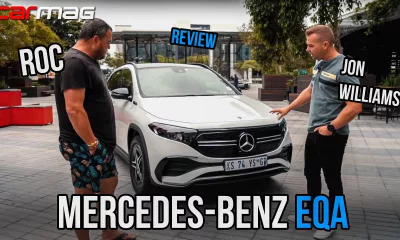A lot of people consider themselves to be good drivers but there are certain habits and ideas that can get in the way of our well-being on the road. Not too long ago we discovered a company called MasterDrive who offered a defensive driving course aimed at providing the necessary information and skills required through the means of a theoretical lecture and a practical in-car assessment so we decided to give it a shot.
The Defensive Driving Code B-Lecture
Most of the defensive driving course consists of a lecture from an instructor who has experience and knowledge on South African motoring legislation and other important information. In this lecture you receive some information and statistics relating to the dangers of being on the road in an attempt to help you understand why being an alert and compassionate driver is vital.
The lecture begins by explaining how the act of driving comprises of 15% physical and 85% mental focus from the driver. Following this, you learn the importance of awareness levels, safety distances, road behavior, rules of the road and driving attitudes. A lot of what you hear is or should be common knowledge to most of us but there is a surprising amount of facts that we take for granted such as suitable following distances and relative reaction times. In this lecture what you will find is that the act of daily driving is a very scientific and theoretical task. You’re also faced with a lot of advice that is easy to remember so the result of this lecture is effective.
The Volkswagen Polo BlueMotion
The ideal car to conduct such a course in would be one of the most sold vehicles in South Africa; the Volkswagen Polo. We were provided with the turbocharged 1,0-litre three-cylinder BlueMotion model which, with 70 kW and 160 N.m of torque, is a car that most drivers should manage without too much hassle. The BlueMotion does have a few long gears in its five-speed manual transmission so, combined with a hint of turbolag, there is limited access to power in the lower revs so it would be interesting to see how this would affect my score in the in-car test.
The In-Car Analysis
This test is supervised by the same team that conducts the lecture and works off the theory that was taught to you moments before. It should be thought of as more of an analysis than a test because, despite being graded at the end of it all, the instructor merely observes how you handle the instruments of your car and how that relates to your actions on the road.
The drive didn’t take longer than 30 minutes and felt somewhat like a standard K53 exam but without the pressure. The instructor also provided several tips and revisions in live time just to enlighten you on what you’re doing wrong and right. The test becomes simple if you follow the philosophy behind what was taught to you in the lecture but it’s not easy to rid yourself of some habits that have been cemented into your style of driving.
Of course due to psychological reasons your actual driving style might not reflect in the analysis which means the instructor might not get the full effect of how you drive, but there were some habits of mine that crept through which he picked up on.
The Results
The results, which were emailed to me not long after the test, are thorough and provides useful commentary on both good and bad habits. By working on a points system the evaluation also includes an overall score which can be seen below:

So it seems there is still a bit of work for me to do but overall my performance wasn’t bad. MasterDrive does recommend doing a course such as this about once a year just to brush up some bad habits that may surface after you leave the course.





